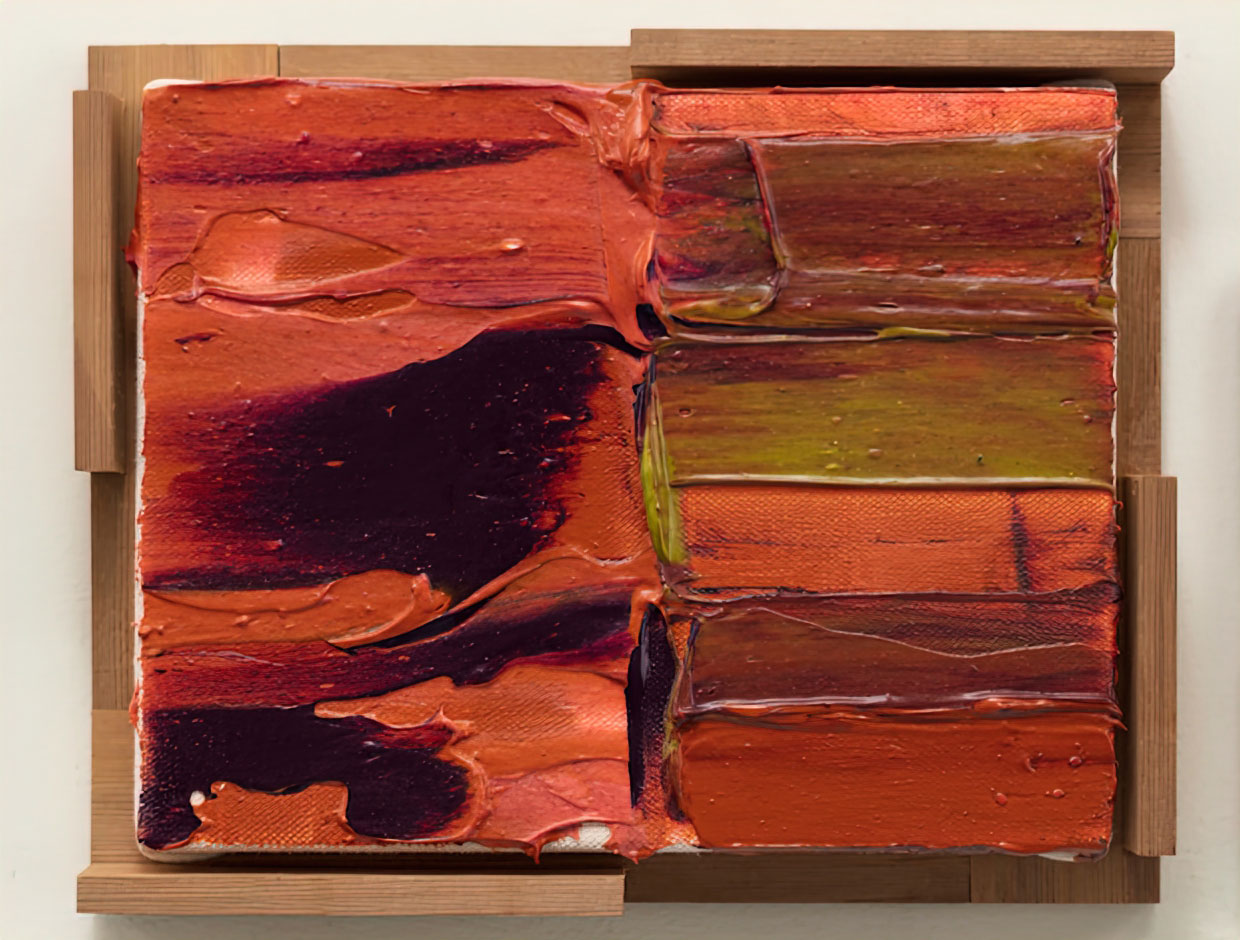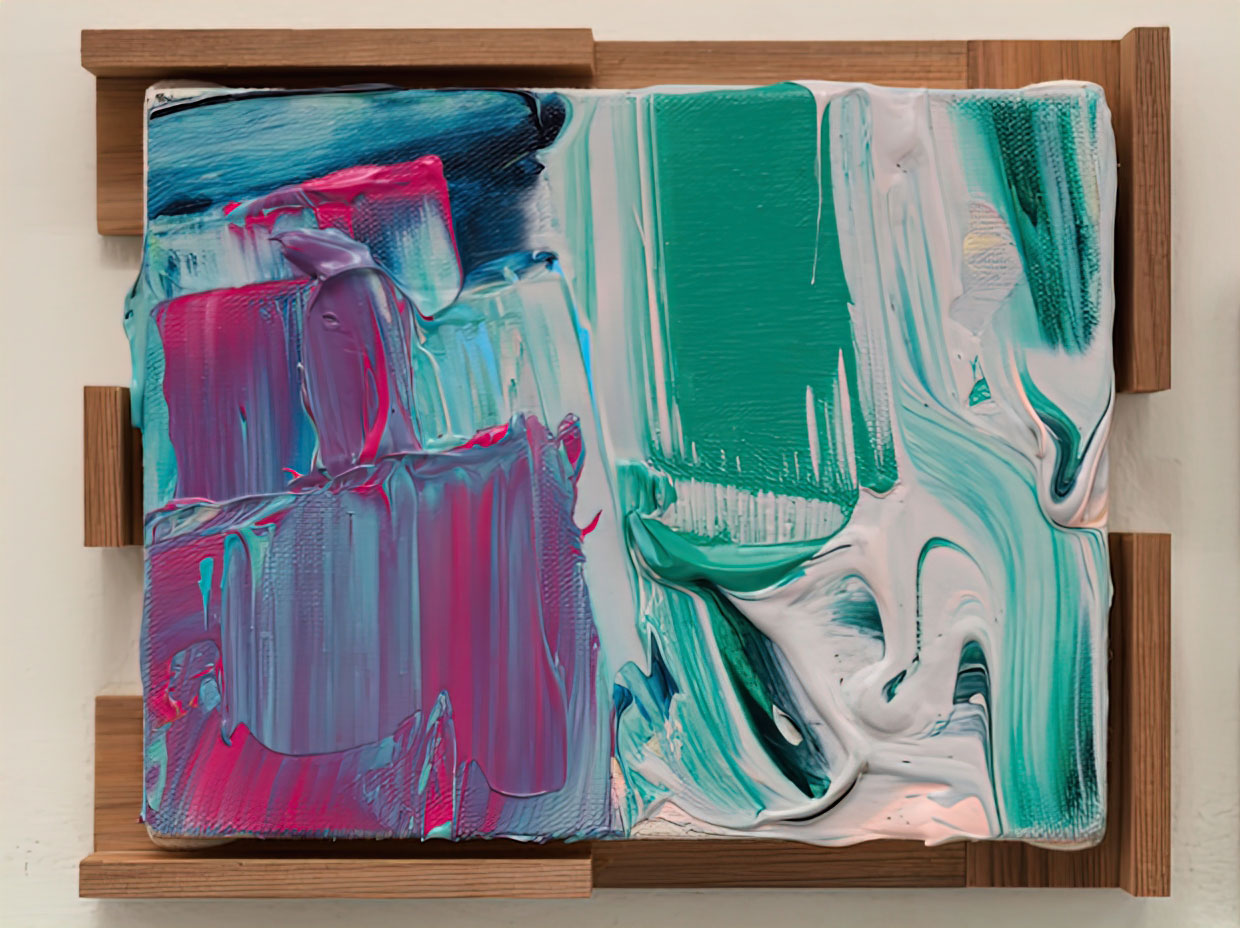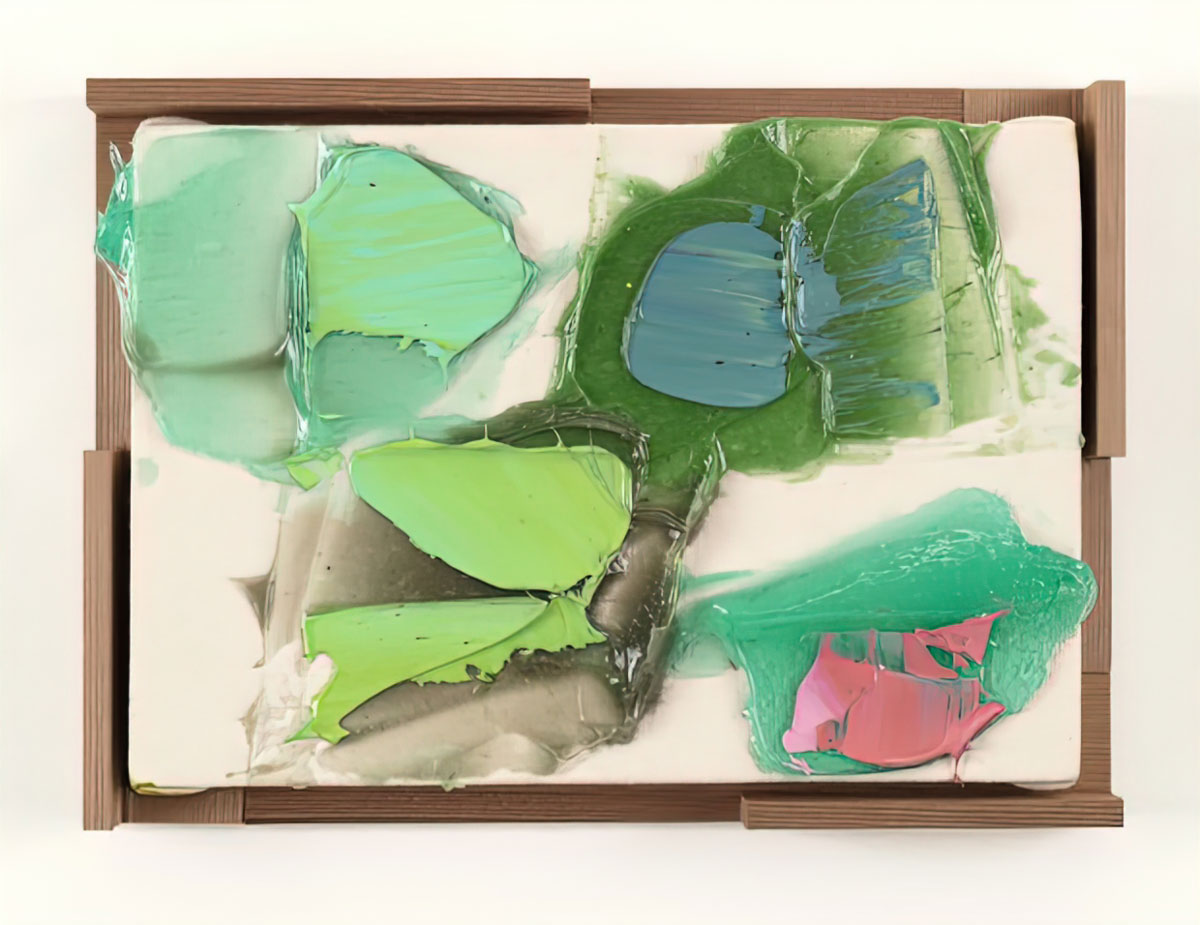ART-PREVIEW:Kenjirō Okazaki-Topica Pictus / La Cienega
 Kenjiro Okazaki is an Artist, Critic and Visiting Professor of Musashino Art University. He lives and works in Tokyo. As an artist his works span over several genres, including painting, sculpture, as well as landscape and architecture. Okazaki is also extremely active as a theoretician and critic, and is the author or co-author of several books.
Kenjiro Okazaki is an Artist, Critic and Visiting Professor of Musashino Art University. He lives and works in Tokyo. As an artist his works span over several genres, including painting, sculpture, as well as landscape and architecture. Okazaki is also extremely active as a theoretician and critic, and is the author or co-author of several books.
By Efi Michalarou
Photo: Blum & Poe Gallery Archive
Kenjirō Okazaki in his solo exhibition “Topica Pictus / La Cienega” presents a suite of 20 abstract paintings, each paired with a short essay and reference image(s), which function as key components to provide multi-layered experiences to audiences. In an ongoing series that now comprises over 150 works since the start of the COVID-19 pandemic, the works on view were made in response to the unprecedented condition of isolated co-existence, the suspension of time and space, and the perceived loss of tactile or concrete experience, which has significantly impacted our social reality. In an ongoing series that now comprises over 150 works since the start of the COVID-19 pandemic, the works on view were made in response to the unprecedented condition of isolated co-existence, the suspension of time and space, and the perceived loss of tactile or concrete experience, which has significantly impacted our social reality. Okazaki named this series “Topica Pictus”. Topica’ means ‘related to topos’. Topos indicates ‘place’ (topic) and Aristotle’s Topica is a theory on topos. On the other hand, ‘pictus; has a meaning in Latin, ‘a painted thing’. One could make an analogy that the theme of this collection is topos or topics. The approach is consistent with his writing (criticism). In the course of his work, Okazaki recalled not only art historical objects such as African masks, decorative and colored manuscripts, Kamakura-era picture scrolls, Momoyama-era Japanese paintings, Renaissance, Impressionist, and Modernist art, but also medieval maps, images of Dumbo, Pearl Harbor, and Google Earth. In his quadriptych “Antaninaomby / Ataokoloinona (Water a Strange Thing), Kilimanjaro / Wakonyingo (Bring negative spirits), Asase Ya, Nyame (2020), his references span mathematical symmetry, African mythology, Bedu plank masks, Francesco di Giorgio Martini’s human proportion drawings, anthropomorphic seventeenth century maps, and David Smith sculptures.
Hina-phases of the moon, “Tunaroa-the father of eels” (2020) brings together a constellation of narratives. In his text, we learn how the “lake in the sea” shape of Tongareva (Penrhyn atoll of the Cook Islands) resembles the Google Earth view of the island in the center: a wholly oceanic earth outlined by a thin atmospheric layer. Okazaki recounts the legend of Hina, a Polynesian goddess associated with the moon and responsible for the creation of coconuts, which are said to have grown from the burial site of the decapitated head of her lover, Tuna, god of the eels, after a heavy rain. Okazaki links the split form of the inner white coconut flesh, te roro o te Tuna (Tuna’s brains), to the shape of Tongareva. There is an implicit reference to “Weeping Coconuts” (1951) by Frida Kahlo where tears fall from the (Tuna’s) eyes of a coconut. The undulating dark, purple curve in the top left corner of Okazaki’s painting ties the narratives together—Tongareva’s shape, the moon, Kahlo—perhaps a forewarning of Earth’s water crisis in the post-Anthropocene era. In another work, the clear-cut split down the top and bottom of the wooden frame of “Open Sea, Stormy Weather” (2020) articulates the vertical break between the horizontal purple and black strokes on the left and the foamy blue cascade on the right. While there are clear formal cues of the fierce perpendicular movement of crossing wind and rain in John Constable’s “Rainstorm over the Sea” (c. 1824–28), or the visceral texture of the rolling waves in Claude Monet’s “At Sea, Stormy Weather” (1880), Okazaki also captures the sensation of immersion and rebirth, embodied in Kaihō Yushō’s “Dragon and Clouds” (1599), depicting a powerful dragon emerging out of a spiraling cloud. In this way, the exhibition involves a multiplicity of places (a set of issues) generated from the artist’s creative thought processes.
Photo: Kenjiro Okazaki, 蜂蜜の発見 / Lo, drawn by the tinkle, winged things, bees follow the sounding brass, 2020, © Kenjiro Okazaki, Courtesy the artist, galerie frank elbaz & Blum & Poe Gallery
Info: Blum & Poe Gallery, 2727 S. La Cienega Boulevard, Los Angeles, CA, USA, Duration: 17/7-14/8/2021, Days & Hours: Tue-Sun 10:00-18:00, www.blumandpoe.com





Center: Kenjiro Okazaki, Scriptorium / A Winged Man or Angel / 言葉が降りてくる場所 , 2020, Photo: Shu Nakagawa, © Kenjiro Okazaki, Courtesy the artist, galerie frank elbaz & Blum & Poe Gallery
Right: Kenjiro Okazaki, Kenjiro Okazaki, The Monkey Mind and The Idea Horse / 壁観, 2020, © Kenjiro Okazaki, Courtesy the artist, galerie frank elbaz & Blum & Poe Gallery
